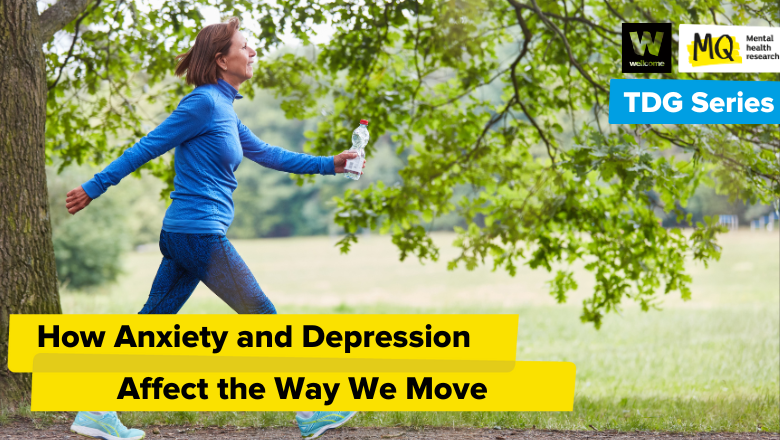In 2024, MQ Mental Health Research created an opportunity, developed and funded by Wellcome, to support researchers outside psychiatry, psychology, and neuroscience to apply bold and novel ideas and methods from their discipline to mental health science. In this Transdisciplinary Research Grant series, we will go through each study, and explain why the results are vital to the future of mental health interventions.
When people often think about anxiety or depression, they usually imagine emotional struggles like feeling sad, overwhelmed, or stressed. On the other hand, little is known about how mental health can affect the way we move. To better understand this connection, Dr Aleksandra Birn-Jeffery and their team carried out a detailed review of studies on anxiety, depression, and movement.
What Did the Research Look At?
Aleksandra’s team began by reviewing over 9,000 movement and mental health studies. After carefully narrowing them down based on specific criteria, they were left with 27 studies on anxiety and 58 on depression. To make sure the research was relevant and helpful, they worked closely with a group of people who had lived experience with anxiety and depression. These service users provided valuable input that guided the review’s direction.
Their involvement empowered the group and they appreciated being treated as equal partners. One member commented, “The way we were encouraged to be involved was empowering and facilitated by how the academics organised the sessions.” Their insights shaped the review and highlighted an important issue: none of the studies included in the review had involved service users themselves. This lack of collaboration underlines the importance of lived experience in mental health research, since the only way to make interventions more meaningful and relevant, is to include those directly affected.
What Did They Find?
The results were mixed, and there were clear differences between the studies on anxiety and those on depression. People with depression walked more slowly, took shorter steps, and took more breaks when compared to people without depression. When the volunteers were given walking and movement tests, people with depression performed worse, suggesting that depression significantly impacts how people move in everyday life.
The results for anxiety were less clear. Unlike with depression, studies didn’t show big differences in walking speed, stride length, or balance between people with and without anxiety. Most anxiety studies focused on balance tests rather than movement patterns, which could explain why there weren’t consistent findings. Another issue was that most studies looked at ‘state’ anxiety—temporary feelings of anxiety in response to specific situations—rather than ‘trait’ anxiety, which is a more constant and long-term part of someone’s personality. The review found very little research on how trait anxiety affects movement.
Why Does This Matter?
This review shows that mental health conditions can change the way we move, but it also spotlights the research gaps. For example, it is still unknown how anxiety impacts movement, especially in people without other health conditions. Most studies included participants with additional challenges, like Parkinson’s disease, making it hard to know how anxiety or depression alone affects movement.
By addressing these gaps, researchers could eventually develop something called a “movement biomarker”—an objective tool that measures movement changes to help diagnose and monitor anxiety and depression. This could aid existing mental health assessments, and provide a more robust picture of someone’s condition.
What Needs to Happen Next?
To move forward, researchers need to focus on studying people with anxiety and depression without other health conditions to isolate how these mental health issues impact movement. Aleksandra’s team noted that consistency in the methods used to measure movement and mental health was essential, whilst is was also important to investigate trait anxiety further to understand its unique effects on movement.
This review has the potential to drive future research, helping movement-based tests become a regular part of mental health care. By studying how conditions like anxiety and depression influence movement, researchers might discover new methods to diagnose and treat these mental health issues.







